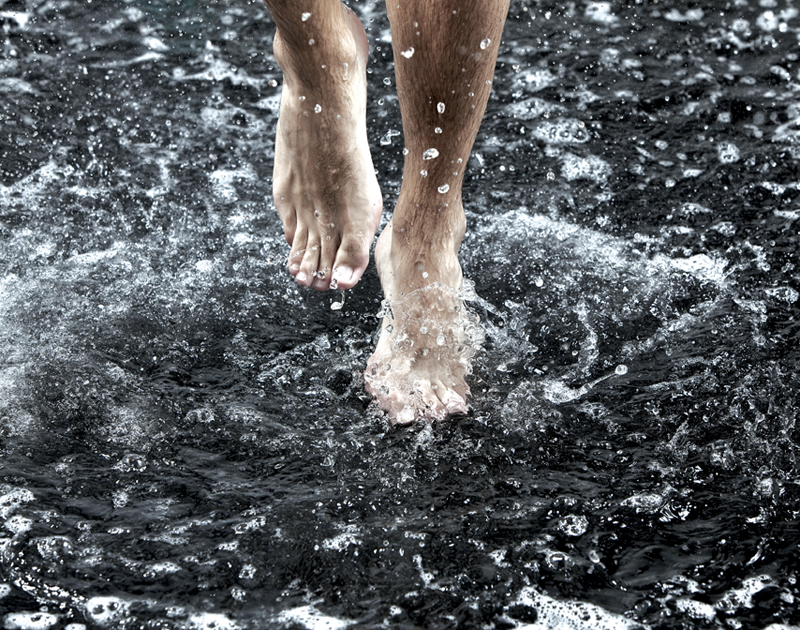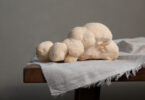Written by Stephen P. Sowulewski
Battle male-centric ailments like heel and ankle pain, gout, foot odor and Athlete’s foot to maintain your health.
With 26 bones, 33 joints and more than 100 muscles, tendons and ligaments, the foot needs some TLC. Whether you’re a walker, jogger, runner or weekend warrior, feet demand extra attention to help prevent undue wear and tear and further injury. To put your best foot forward, recognize these common foot ailments and treat them before they become serious.
Pain in the foot and ankle
Podiatrist Matthew Hopson, D.P.M., of Tidewater Physicians Multispecialty Group, notes that heel pain, ankle pain and instability are among the most common foot ailments that men experience. Pain felt under the heel or along the arch of the foot can be worst during the first steps in the morning and after prolonged sitting. A person may feel dull, intermittent pain that eventually becomes sharp and persistent, or may experience general stiffness in the foot or ankle.
Many men suffer from plantar fasciitis, an inflammation of the connective tissues in the bottom of the foot. The plantar fascia, designed to support and form the arch, has very little elasticity and is very thick. Under normal conditions pronation allows the arch to flatten, which helps the body absorb shock. However, if the foot is weak or tired or if footwear is not supportive, then the arch can flatten more than normal, leading to excessive pronation. What causes it? Sudden changes in activity, changes in training, flat feet, sudden increase in body weight or poor shoe support. Stretching of the calf, Achilles tendon and foot may help to eliminate the majority of plantar fasciitis problems. Strengthening the muscles of the foot and ankle may also help.
For ankle rehabilitation, experts at the Mayo Clinic advise performing various exercises consisting of three sets of 15 reps, two to three times a week, but not on consecutive days. To regain motion, write the alphabet in the air with your foot. To regain proprioception, stand on your injured leg for two minutes, with your other leg bent at the knee and off the ground. To work the muscles that pull the toe toward you, sit on the ground, one leg straight out on the floor, and put a resistance band or towel around the top of the foot near the bottom of your toes. Practice easing up on the gas pedal and flooring the gas pedal, known as dorsiflexion and plantar flexion. For balance, toss a tennis ball or basketball against a wall while standing on one leg.
Gout
Once called the “disease of kings,” gout is a form of arthritis. It involves episodes of nearly unbearable pain in one or more of the joints. According to the Arthritis Foundation, more than two million Americans, mostly men, are dealing with it.
The intense pain is the result of a buildup of the compound uric acid in the joint. Other risk factors include taking certain medications, such as water pills for high blood pressure, and having a family member with gout. To prevent gout attacks, the Arthritis Foundation recommends drinking plenty of water, avoiding alcohol and foods such as dried beans and mushrooms, and maintaining a healthy weight.
Recently, the FDA approved the first new gout medication in 40 years: Uloric. In October, Arthritis Care and Research reported that people with gout often wear shoes with improper cushioning. From a nutrition perspective, a 20-year study of more than 49,000 men in the U.S. published in a 2009 issue of Archives of Internal Medicine reported that vitamin C seemed to reduce the risk of gout. Men who took 1.000-1,499 mg a day had a 34 percent lower risk of gout; those who took 1,500 mg a day had a 45 percent lower risk.
Odor
Odor-producing bacteria thrive in warm, moist environments. Changing socks twice a day may help. Socks made with artificial fiber acrylic, not cotton, are better at wicking moisture away from the feet. Applying an antiperspirant that contains aluminum chloride over the feet at morning and night will keep feet dry.
Athlete’s foot
The medical term is tinea pedis and it may be acute, chronic or intermittent. Athlete’s foot occurs when a certain fungus grows on the skin covering the feet. In addition to the toes, it may also occur on the heels and palms. Athlete’s foot is contagious.
The most common symptom is cracked, flaking and peeling skin between the toes or side of the foot. Other symptoms can include red and itchy skin, burning or stinging pain and blisters that ooze or get crusty.
Over-the-counter antifungal powders or creams can help control the infection. These generally contain miconazole, clotrimazole or tolnaftate. Keep using the medicine for one or two weeks after the infection has cleared to prevent the infection from returning. If the condition does not get better, see your health care provider for stronger medications or antibiotics.


